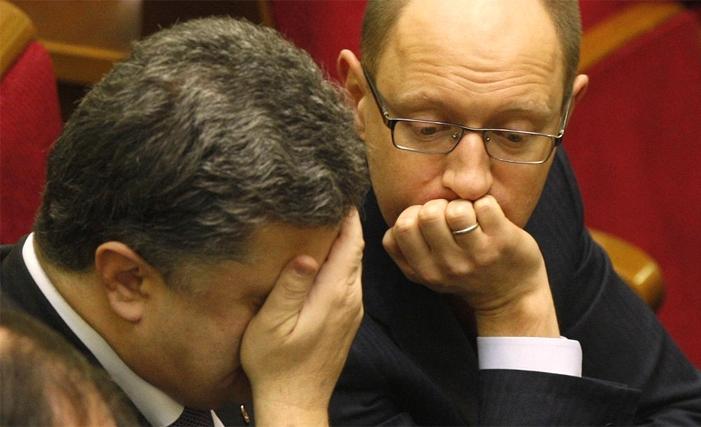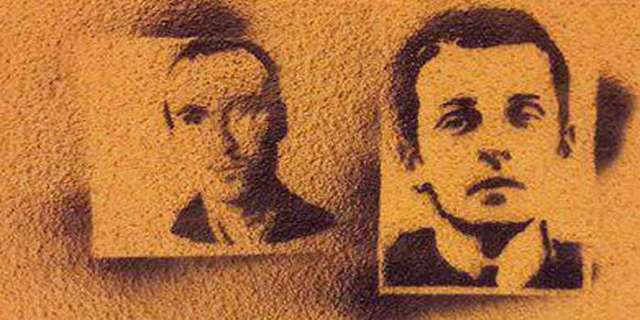People in Ukraine and elsewhere like to decry the ‘system’ that exists in Ukraine, that Maidan apparently stood against and which wasn’t destroyed. But they ignore the fact that this same ‘system’ had, in Spring 2014, ultimately saved Ukraine.
Back before the recent anti-opposition craze, some of the more reasonable Russians often quipped that Maidan succeeded because it had an actual parliamentary opposition at its back, something the Russian protest movement didn’t have. Indeed, the best use for an opposition MP back during the Revolution was as a battering ram. Opposition parties brought many of their members to Maidan and generally constituted at least part of Maidan’s core. However, it was a core that tolerated them reluctantly.
The giants and stooges of Maidan
It seems to be forgotten that nobody, back during Maidan, liked the triumvirate of Yatseniuk, Klitschko
, and Tyahnybok all that much. Actually, nobody liked them at all. Besides the obvious distrust that comes with the ZRADA mentality (indeed, the modern ZRADA craze started during Maidan), none of the three were exactly revolutionary leader material. There was some hope in certain corners for Tyahnybok at the beginning, since his Svoboda party used to bill itself as the radical actions-before-words right-wing party, but ultimately it amounted to nothing. Klitschko, then fronted as a possible presidential candidate, got a fire extinguisher to his face. Yatseniuk was scoffed at thanks to his history of government service, notwithstanding the fact that with his rabbity features he was easy to laugh at. Indeed, Maidan did not have any leaders. But it had a face, and it was an important face.
When Yanukovych
fled the country, however, the opposition neatly slotted into the voids left by the former regime’s departure. Opposition leaders and MPs helped assemble the Rada and impeach Yanukovych (despite Ukraine’s lack of an impeachment mechanism), get the riot police and Interior Troops off the streets, and elect a new speaker, who also became Acting President and, essentially, Ukraine’s dictator. That person was Oleksandr Turchynov.
Under observation, under threat
The government of Ukraine was non-existent, and the system would remain in shambles for months to come. During these months, Russia pounced on Ukraine, taking away Crimea and then instigating the insurgency in Donbas. It is clear that Russia was goading Ukraine’s new government into responding with force, so that it could steamroll Ukraine in a few days. It should be remembered that along with Crimea, Russian troops remained poised along the border from the north as well as the east for the better half of 2014. In essence, Ukraine was under constant threat of Russian invasion.
Yet despite this, Ukraine managed to get its government working, with an understandable priority on security services, and managed to receive international recognition – something Russia worked to undermine. At the same time, it had to keep radical tendencies within the country contained, while at the same time stemming the undercurrent of pro-Russian protests sweeping parts of the country. This had the unfortunate side effect of creating the impression that the government wasn’t doing anything – selling the country down the river, as many Ukrainians concluded. This was why some Ukrainians cheered on May 2nd in Odesa
: at the time, it was not seen as a tragedy, but as a blow struck against separatism. It also helped plant the idea that the government are sellouts and only ‘common people’ were doing anything to fight Russian aggression, which is seriously biting us in the ass right now. But at the time, Ukraine simply had no other choice.
Unlikely saviours
The bottom line is that the corrupt and imperfect ‘system’, which brought Yanukovych to power and which Maidan, in part, rallied against, ultimately helped save Ukraine. Opposition became the government: opposition figures, some of them with experience in the corridors of power, slotted into key positions: thus Turchynov, one-time head of SBU, became Speaker and Acting President; former Speaker Yatseniuk became Prime Minister, former Kharkiv governor Avakov became Interior Minister, and so on. Of course, imperfect as it is, some parts of the system lagged behind, Svoboda in particular, but the point is that it worked. Ukraine had achieved a succession of power that allowed it to soldier on, elect a legitimate President and start fighting back Russian personnel engaged in military acts and its proxies, one step at a time.
While this is not particularly revolutionary (if we take that any revolution should be like the October Revolution in Russia in 1917, complete with the Battleship Avrora and revolutionary sailors), the result is that Ukraine continues to exist. While troubles, political infighting, legacies of the old regime, and cargo-cult approaches to corruption fighting, press freedom, and civil society continue to hound it, and while Ukraine had to make bad decisions and commit balancing acts, there is still a Ukraine around to do all that. On the other hand, if Maidan had violently dismantled the established system of power back in the day, Ukraine would most likely be occupied and would cease to exist. Nobody in the West would support an anarchy of radicals and revolutionary committees. Russian troops would be lauded as saviors and peacemakers. Nobody would dispute Russia’s right to do as it pleased, and Ukraine would either become a servile client state under a reinstalled Yanukovych or a part of Russia altogether. That this had not come to pass is ultimately thanks to Ukraine’s much-reviled ‘system’.
The truth is that things are rarely in black and white, and while Ukraine’s establishment is responsible for its many modern woes, in the end it saved Ukraine, even if unwittingly so. And, in part, the system allowed Ukraine to survive so that Ukraine can finally dismantle it and put it to rest.
Same old faces? Maybe. But there’s too much at stake to gamble.


